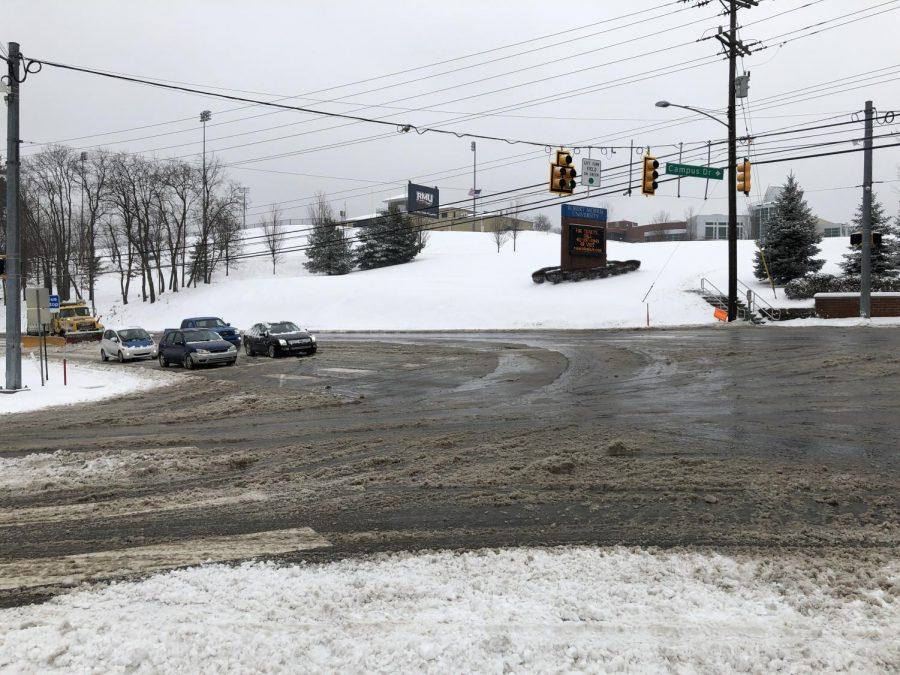AAA tips and suggestions to help motorists stay safe this winter
Snow, slush and wet roads were the story of the day in Moon Township and across much of the Pittsburgh region. Photo Credit: (RMU Sentry Media/Gage Goulding)
March 6, 2019
MOON TOWNSHIP – Winter can be a treacherous time to drive, especially when snow and ice are covering the roads.
According to research done by the AAA Foundation for Traffic Safety, inclement weather is a factor in more than 500,000 crashes and more than 2,000 road deaths every winter.
AAA encourages drivers to be prepared, slow down, and practice caution during the cold days to come.
“Driving in winter conditions can be challenging,” said Terri Rae Anthony, safety advisor for AAA East Central. “Black ice, heavy snowfall, roads that have not been cleared of snow and other bad driving conditions can make it more difficult for drivers to control their vehicle and avoid a crash.”
To prepare a vehicle for the winter ahead, AAA recommends the following:
Have your battery tested. If a battery is more than three years old, have it checked by a professional as soon as possible to ensure that it’s strong enough for extremely low temperatures.
Replace worn windshield-wiper blades. If your climate is especially harsh, purchase one-piece, beam-type or rubber-clad “winter” blades to fight snow and ice buildup. Use cold-weather windshield washer solvent and carry an ice scraper.
Inspect your tires. Make sure tires have an adequate tread depth of at least 4/32” since worn tires can affect the car’s ability to stop in slippery conditions.
An easy way to check for wear is by inserting a quarter into your tread groove. If the top of Washington’s head is exposed, the tread depth is less than 4/32″ and it’s time to replace your tires.
Additionally, make sure you have a spare tire that is properly inflated, just in case.
Carry an emergency kit equipped for winter weather. The kit should include sand or kitty litter, a small shovel, flashlight, an ice scraper or snow brush, booster cables, a blanket, gloves or mittens, and flares or reflective triangles.
While considering driving, AAA suggests the following:
Stay home. If it’s not mandatory for you to leave, then don’t.
Do not tailgate. Extend the normal following distance of three seconds to five or six when driving on slippery roads. The extra time will provide additional braking room should a sudden stop occur.
Never use cruise control on slippery roads. If your vehicle hydroplanes or skids, it will be harder for you to regain some traction simply by lifting off the accelerator.
Slow down and adjust your speed to the road conditions. Accelerate, turn, and brake as gradually and smoothly as you can.
Don’t slam on the brakes. If your car begins to skid, continue to steer in the direction you want the car to go. Slamming on the brakes will only make your vehicle harder to control.
Use extreme caution on bridges and overpasses. Black ice typically forms first in shaded areas of the roadway and on bridges and overpasses that freeze first and melt last. Although the road leading up to a bridge may be fine, the bridge itself could be a sheet of ice.
React quickly. Watch the traffic ahead and slow down immediately at the sight of brake lights, skidding cars or emergency flashers.












